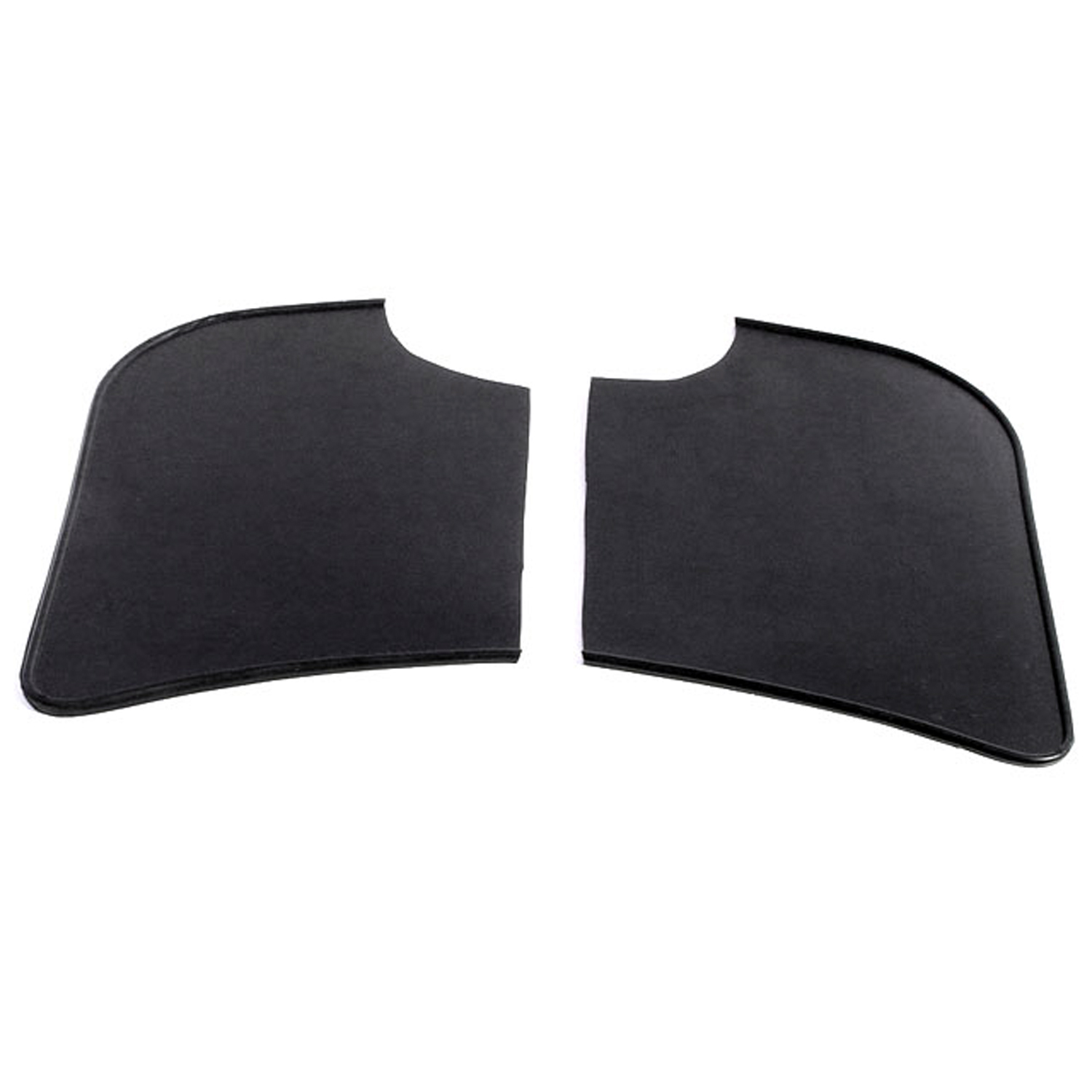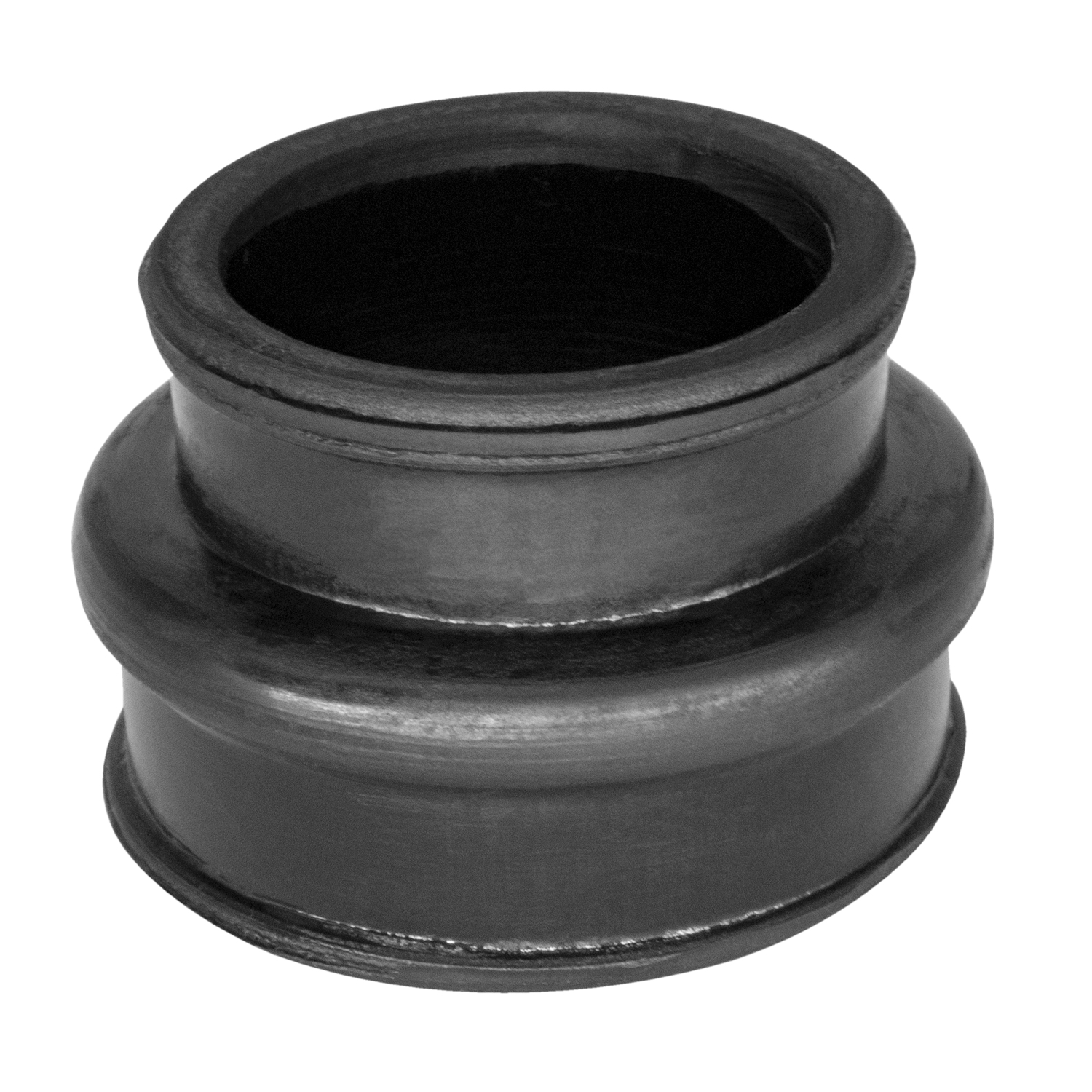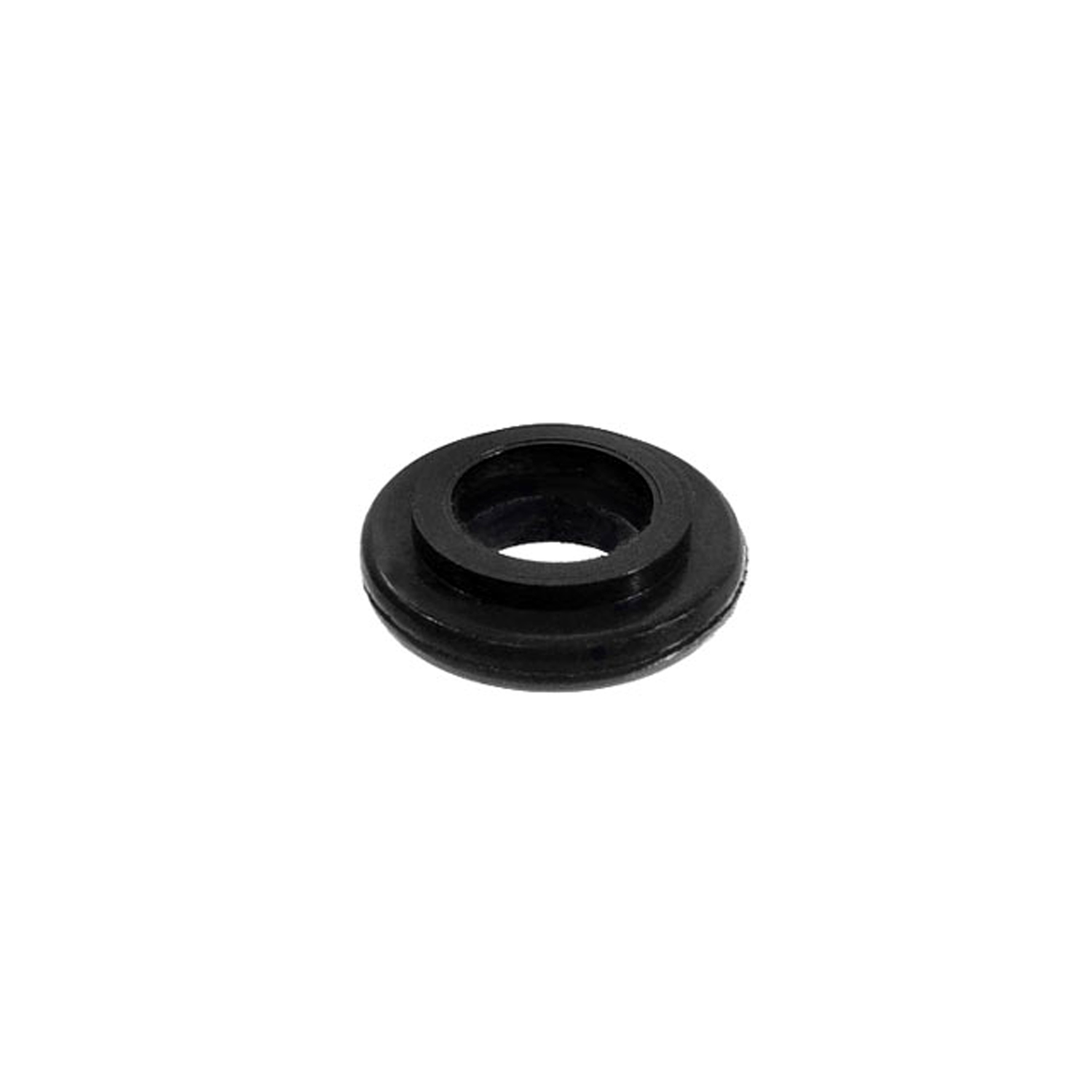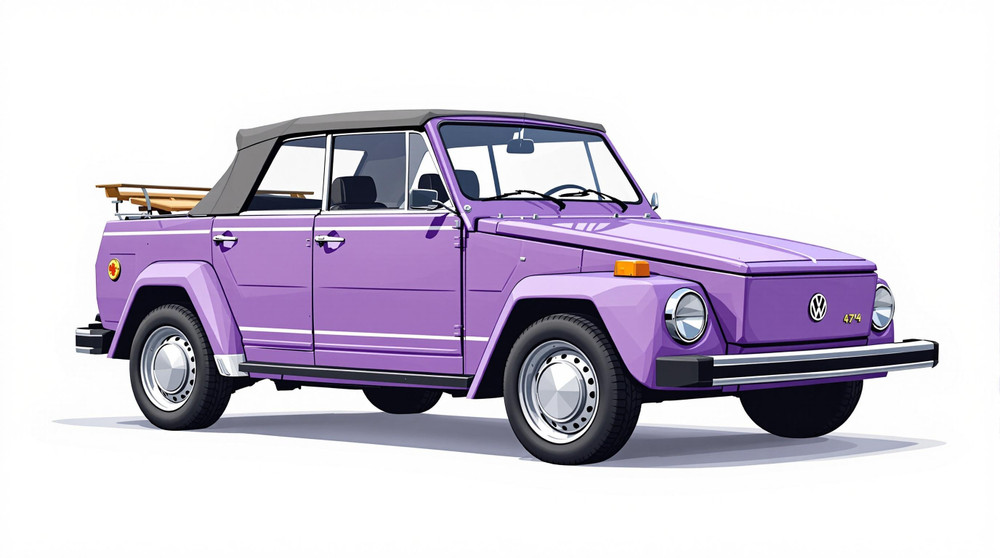Image of 1974 Volkswagen Thing, Note: These illustrations use artistic license and may differ from actual historical models.
Performance Metrics
Fundamental Metrics
Emotional Appeal
MMP Rating
| Engine Specifications | |
|---|---|
| Engine: | Air-cooled, overhead-valve, horizontally opposed four-cylinder engine |
| Displacement: | 1584cc |
| Horsepower: | 46 horsepower |
| Torque: | 71 lb-ft |
| Compression Ratio: | 7.5:1 |
| Ignition System: | Distributor ignition system |
| Cooling System: | Air-cooled |
| Performance Specifications | |
| 0-60 Time: | 23 seconds |
| 1/4 Mile Time: | Not available |
| Top Speed: | 68 mph |
| Transmission and Drive | |
| Drive Type: | Rear-wheel drive |
| Transmission Type: | 4-speed manual |
| Fuel and Efficiency | |
| Fuel System Type: | Carburetor |
| MPG: | 20-25 mpg |
| Dimensions and Brakes | |
| Brakes: | Front disc and rear drum brakes |
| Wheelbase: | 94.5 inches |
| Weight: | 1,984 lbs |
Note: Specifications for classic cars are given to the best of our ability, considering the limited and variant data available.
1974 Volkswagen Thing: A Quirky Classic with Military Roots
The 1974 Volkswagen Thing, known as the Type 181 by VW aficionados, is a vehicle that defies convention. Born out of a NATO military vehicle design, the Thing became an icon of 1970s automotive eccentricity. Its utilitarian charm and simplistic design were a stark contrast to the sleek and sophisticated cars of the era. Volkswagen, a brand synonymous with the Beetle's success, ventured into new territory with the Thing, offering a car that was part beach cruiser, part urban explorer.
Design and Innovation
With its boxy silhouette and flat panels, the Volkswagen Thing exuded a no-nonsense aesthetic that was both functional and endearing. The exterior styling was straightforward, with a fold-down windshield and removable doors enhancing its open-air appeal. Inside, the cabin was spartan with heavy-duty upholstery and easy-to-clean surfaces, reflecting its military heritage. Despite its basic nature, the Thing was innovative in its versatility—seats could be rearranged or removed entirely for maximum cargo space.
Color options for the Thing were as vibrant as the decade it thrived in, with choices like Sunshine Yellow and Pumpkin Orange capturing the spirit of the '70s. Among these, Acapulco Blue and Blizzard White were particularly popular. The most iconic body style was undoubtedly the four-door convertible model, complete with a rudimentary soft top that contributed to its beach-ready image.
Historical Significance
The Volkswagen Thing's impact on automotive design was less about technological breakthroughs and more about cultural influence. It stood out for its unapologetic simplicity at a time when cars were becoming more complex. This back-to-basics approach resonated with a segment of car buyers who craved something different—something that made a statement about practicality and fun over luxury.
Performance and Handling
Performance-wise, the Thing wasn't built for speed; it featured an air-cooled four-cylinder engine similar to the Beetle's, which provided modest acceleration. Top speeds hovered around 68 mph—a leisurely pace by modern standards—but adequate for its intended use as a light utility vehicle. On rough terrain or winding roads, the Thing handled with surprising agility thanks to its high ground clearance and sturdy construction. Drivers often remarked on the visceral driving experience—the rumble of the engine, the wind in their hair, and the tactile feedback from its manual controls.
Ownership Experience
Owners of the Volkswagen Thing appreciated its dual nature as both a daily driver and a recreational vehicle. Its ease of maintenance made it beloved among DIY enthusiasts while its reliability cemented its reputation as a dependable companion on both city streets and country trails.
Fun Facts
The Volkswagen Thing has had its share of interesting trivia over the years. For instance, some models were outfitted as "Acapulco" editions featuring striped surrey tops—these are now highly sought after by collectors. Although not known for setting speed records, the Thing has made lasting impressions in pop culture appearances and remains an emblem of 1970s automotive freedom.
Collector's Information
Today, collectors find themselves drawn to the quirky charm of the Volkswagen Thing. With estimates suggesting that around 25,000 units made their way to America during its brief sales window from 1973 to 1974, it's relatively rare but not impossible to find. Values can vary widely based on condition and originality; however, well-preserved examples can fetch anywhere from $15,000 to $30,000 or more in today's market.
Conclusion
The 1974 Volkswagen Thing may not have been everyone's cup of tea when it first trundled onto American shores; however, its unique blend of simplicity and adaptability has earned it a devoted following over time. As we look back at this peculiar piece of automotive history, we can't help but appreciate how it encapsulated a moment in time when cars could be both utilitarian workhorses and symbols of carefree adventure.
1974 Volkswagen Thing Catalog of Parts
 1974 Volkswagen Thing Gravel Shields. Molded flat without metal backing plates-FS 40Gravel Shields. Molded flat without metal backing plates. Apply with contact cement. 7-5/8" long X 5-5/8" wide at top. Pair
1974 Volkswagen Thing Gravel Shields. Molded flat without metal backing plates-FS 40Gravel Shields. Molded flat without metal backing plates. Apply with contact cement. 7-5/8" long X 5-5/8" wide at top. Pair 1974 Volkswagen Thing Intake Manifold Boots. Made of rubber. 1-3/8" I.D., 2" O.D-RP 300-BIntake Manifold Boots. Made of rubber. 1-3/8" I.D., 2" O.D. X 1-1/2" high. Pair
1974 Volkswagen Thing Intake Manifold Boots. Made of rubber. 1-3/8" I.D., 2" O.D-RP 300-BIntake Manifold Boots. Made of rubber. 1-3/8" I.D., 2" O.D. X 1-1/2" high. Pair 1974 Volkswagen Thing Oil Cooler Seal. 7/16" I.D., 7/8" O.D. Each-RP 8-BOil Cooler Seal. 7/16" I.D., 7/8" O.D. Each
1974 Volkswagen Thing Oil Cooler Seal. 7/16" I.D., 7/8" O.D. Each-RP 8-BOil Cooler Seal. 7/16" I.D., 7/8" O.D. EachWhy Choose Metro?
For over 100 years, Metro Moulded Parts has been the pinnacle of quality in classic car restoration parts. Our commitment to precision and authenticity in every component ensures a perfect fit and an OEM-level appearance.
- Expert Craftsmanship & Quality: Each part is a testament to our dedication to reliability and perfection, crafted from original designs and thoroughly tested.
- Advanced Technology: We use cutting-edge techniques to create flawless, long-lasting parts that surpass others in performance.
- SuperSoft Sponge – The Ultimate Door Seal: Not only are our door seals 30% softer than competitors', but they're also guaranteed to never leak. They effectively reduce wind and road noise, enhancing your classic car's comfort and driving experience.
- Proudly American: Our parts are a product of American craftsmanship, made in the USA with a spirit of excellence and heritage.
- Unrivaled Warranty: We back our products with a 30-year industry-leading warranty, a testament to our confidence in their quality.
Join us in preserving the legacy of classic cars with parts that are crafted for perfection, not just made.

